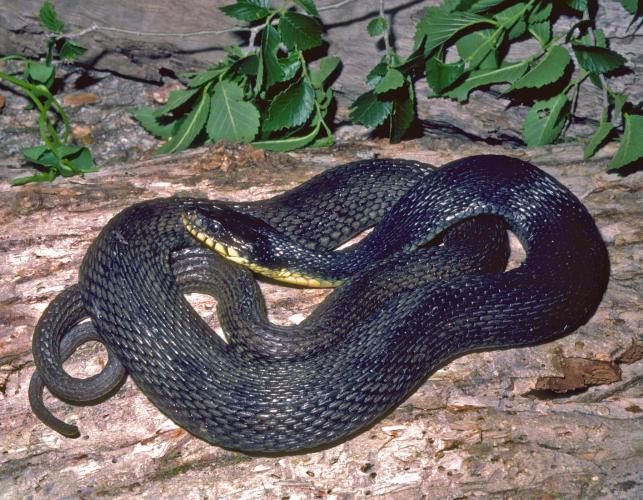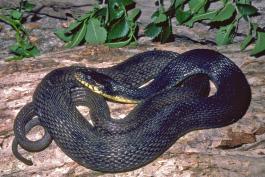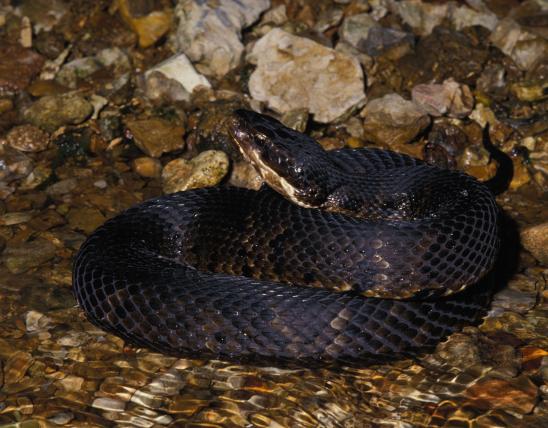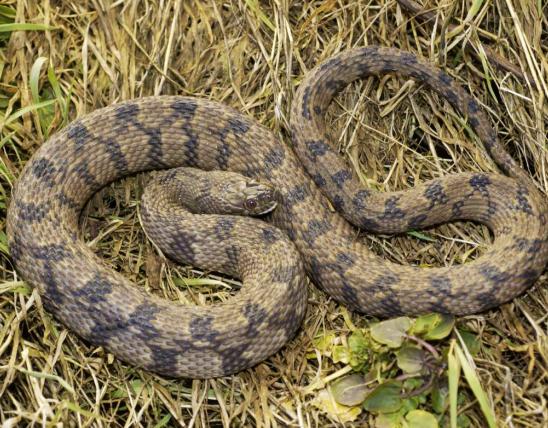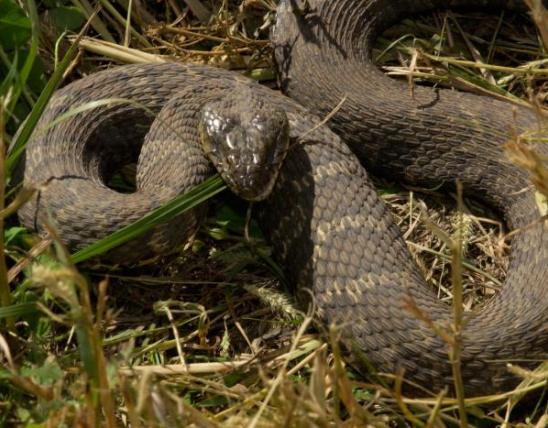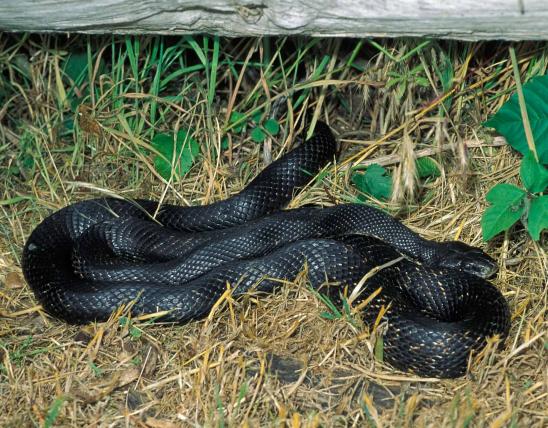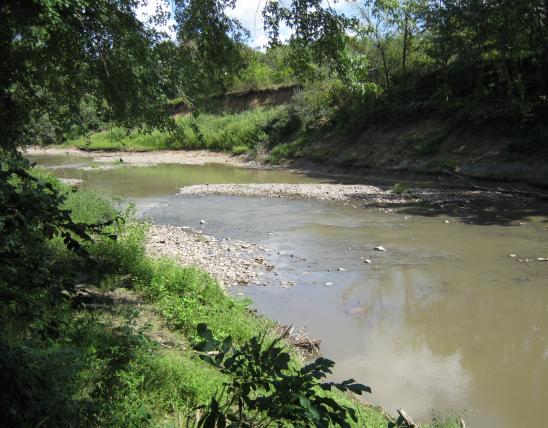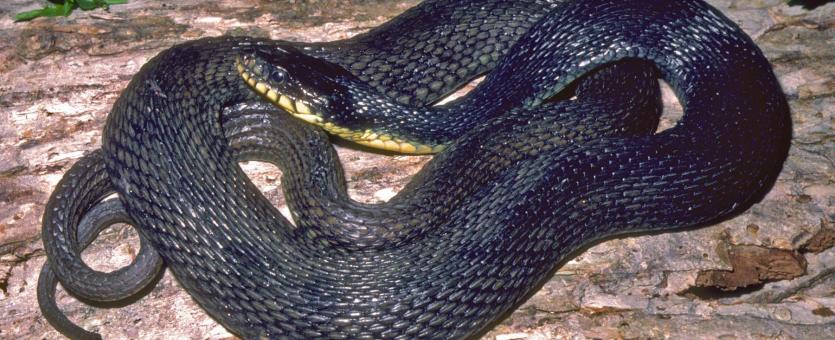
The plain-bellied watersnake is a medium-sized, heavy-bodied, dark-colored, semiaquatic snake with a plain yellow belly. It is mainly gray, greenish gray, or brownish black, with little or no pattern on its back. Populations in western Missouri are more likely to have blotches along the back and sides. The belly is plain yellow or occasionally with some orange.
This nonvenomous snake will bite viciously and smear a foul-smelling musk if captured.
Similar species:
- Missouri has four other species of watersnakes (Nerodia spp.). The coloration, particularly the plain, unmarked belly, helps distinguish the plain-bellied watersnake from the others.
- Watersnakes are often confused with the venomous northern cottonmouth (Agkistrodon piscivorus) and killed because of unwarranted fear. Cottonmouths are more heavy-bodied, with a larger, chunky head and a facial pit between the nostril and eye; they are darker and have a light line from the eye to the corner of the mouth.
Adult length: 30 to 48 inches; occasionally to 64 inches.
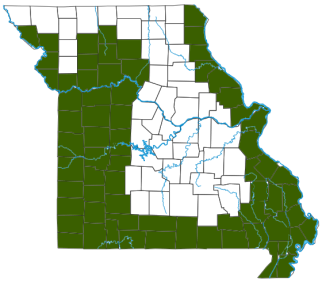
Occurs in the Bootheel and north along the Mississippi River floodplain, and along our southernmost counties and northward in western Missouri to about Buchanan, Livingston, and Linn counties.
Habitat and Conservation
This species is active from late March through October. Most individuals emerge from their overwintering retreats in April and early May.
Plain-bellied watersnakes prefer the quiet waters of swamps, sloughs, oxbows, slow-moving rivers and streams, floodplains, seasonally flooded bottomland woods, drainage ditches, lakes, and ponds. In summer, however, it is not unusual to find them on dry land, because they may move far away from water.
Individuals bask on logs in shallow water, on branches above the water, or along the shore.
In winter, these snakes retreat to mammal burrows, rock piles and crevices, riprap rocks along levees, and rotting stumps and logs. In north-central Missouri, this is one of the snake species that commonly overwinters in crayfish burrows.
Food
Foods include fish, toads, frogs, tadpoles, salamanders, and crayfish. Although most other watersnake species eat mostly fish, this species seems to eat a larger percentage of frogs and toads.
Status
Taxonomy: The plain-bellied watersnake used to be divided into several different subspecies, including the yellow-bellied watersnake (N. e. erythrogaster), occurring in eastern Missouri along the Mississippi River and in the Bootheel, and the blotched watersnake (N. e. transversa), occurring in western and southwestern Missouri, but those subspecies are no longer recognized.
Life Cycle
Courtship and mating occur in spring, especially in April and May. Females give birth to live young during August and early September, with usually 10–20 in a litter. Larger females bear larger litters. Individuals become sexually mature by about age three. Lifespan can be nearly 15 years.
Human Connections
As with most of our watersnakes, although it is nonvenomous, it is pugnacious. When cornered, an individual will strike or bite viciously. When captured, watersnakes also excrete a foul-smelling musk from glands in the base of the tail that it is often mixed with feces and smeared on the captor.
Snakes stir our imaginations and figure prominently in our myths, religions, and stories. We humans have invented many unfair and incorrect myths that make them seem the embodiment of evil. Curiosity and knowledge helps us overcome our prejudices.
Ecosystem Connections
As predators, watersnakes control populations of the animals they consume. But snakes are preyed upon themselves. Their defenseless newborns are eaten by animals ranging from large frogs and fish to other snakes and birds and mammals. Adults are eaten by predatory mammals and birds. Watersnakes' defensive behaviors (biting and smearing bad-smelling stuff on enemies) remind us that they are a prey species themselves.
